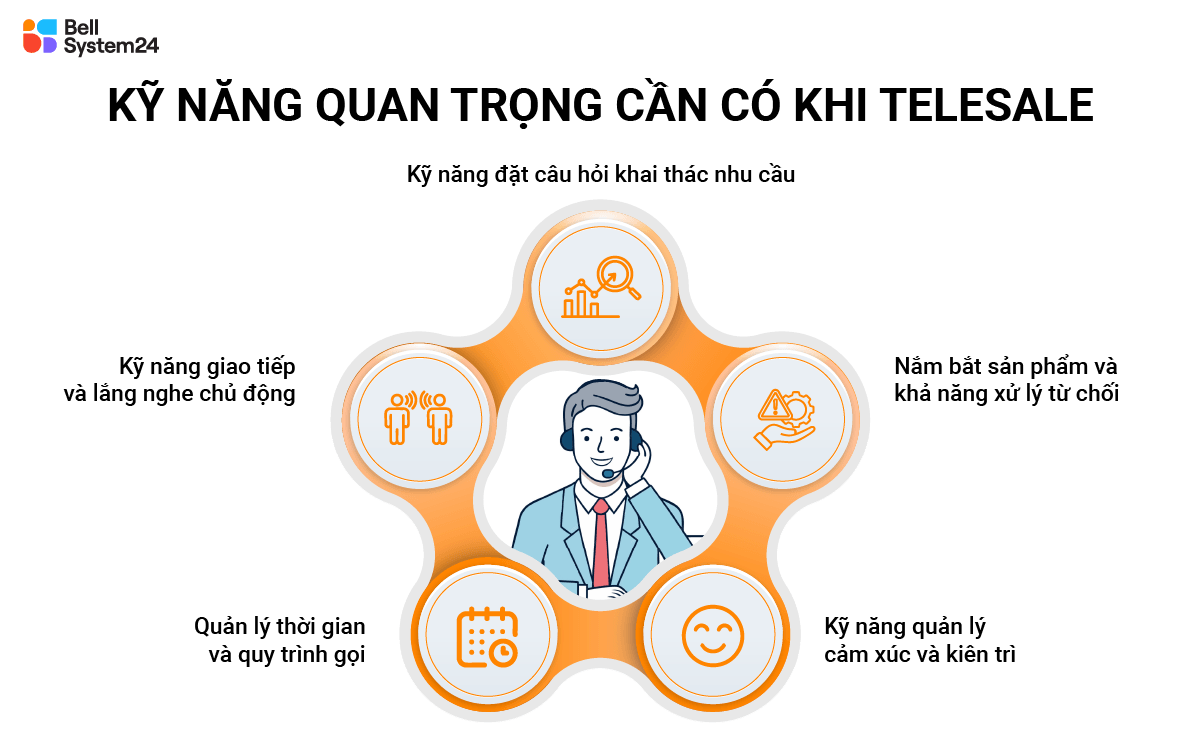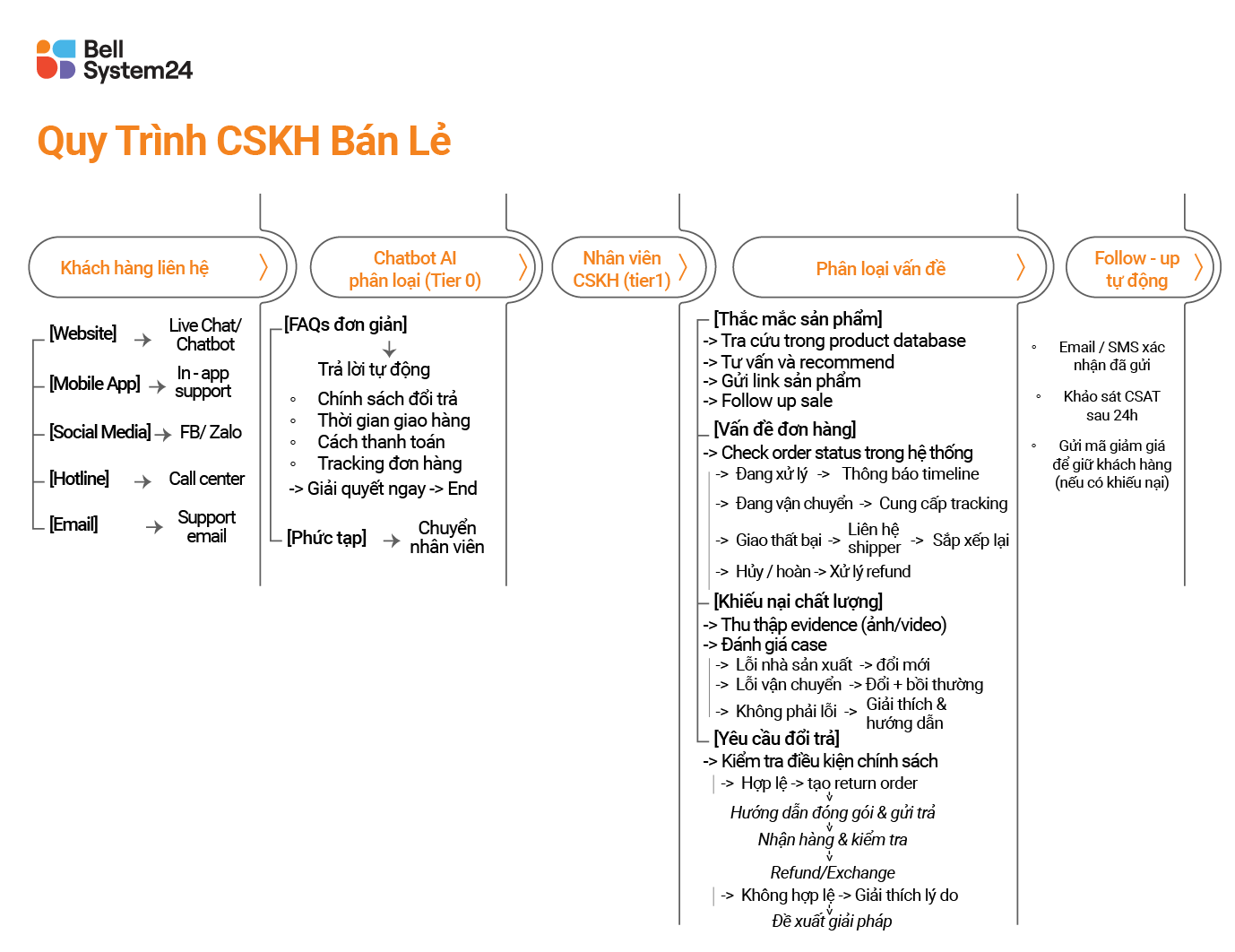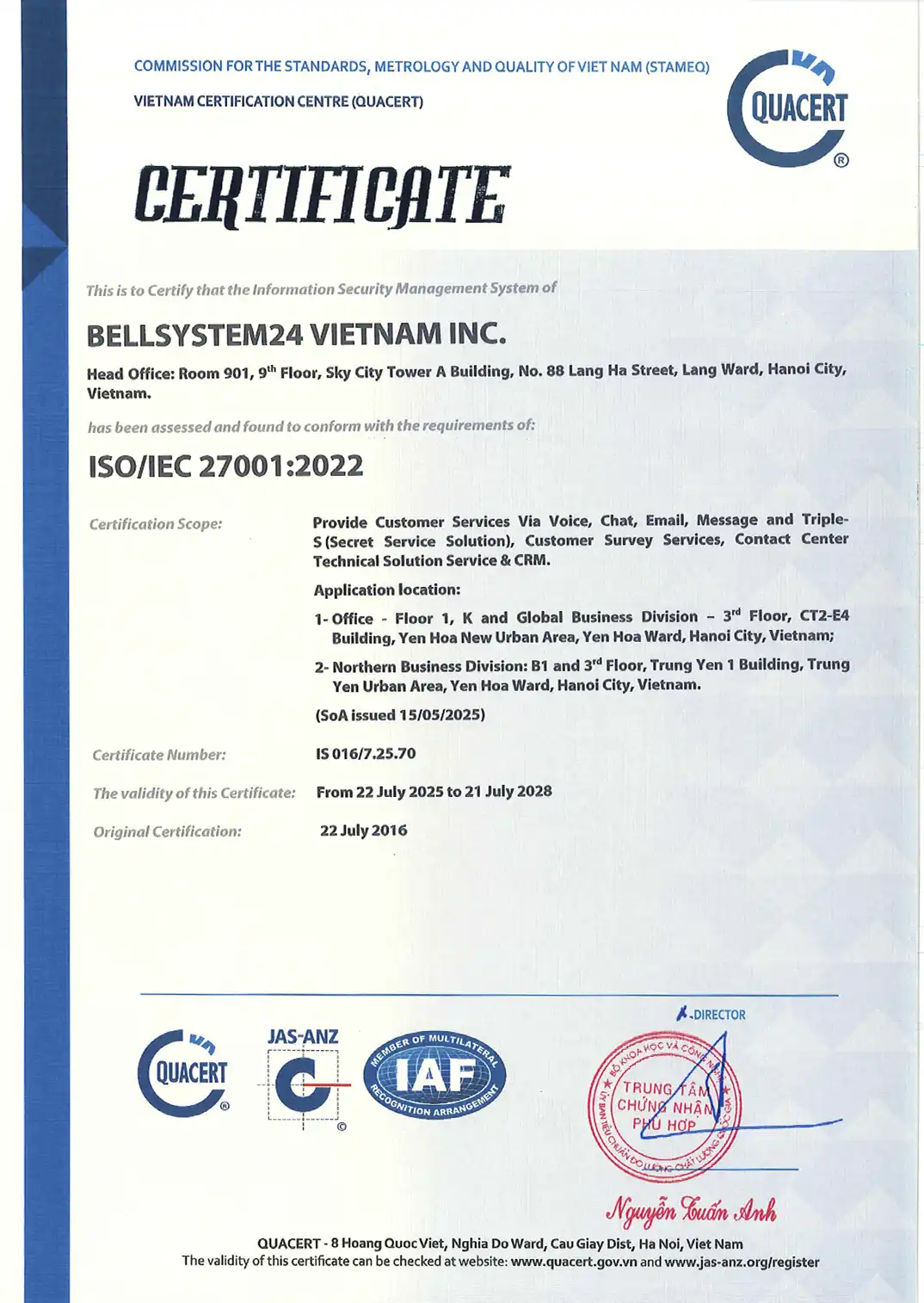What is telesales?
To make it easier to visualize, "telesales" can be broken down into two parts: Tele (Telephone) means telephone and Sale means selling goodsSimply put, telesales is a form of sales conducted over the phone. In this process, employees proactively contact potential customers or receive calls from customers to introduce and advise them on products/services and persuade them to make a purchase decision. This is one of the most popular direct sales channels, combining flexible communication skills with effective customer outreach strategies.
Telemarketing is currently mostly operated and conducted based on the platform. Call Centerinstead of using personal phones as before.
Essential skills for effective telesales
To be effective in telesales, practitioners need to possess many important skills, not just knowing how to make calls or introduce products. Below are the core skills that a professional telesales representative needs to cultivate.

1. Communication and active listening skills
A clear voice, moderate speed, and friendly tone help create a good impression right from the start. More importantly, telesales representatives need to know how to listen actively: not only hearing what is said, but also recognizing the customer's emotions and attitudes through their tone of voice in order to respond appropriately.
2. Questioning skills to identify needs
Instead of just introducing products, effective telesalespeople know how to ask open-ended questions that encourage customers to share their problems. From there, they can easily steer the conversation and propose solutions tailored to the customer's needs, creating a sense of understanding.
3. Product knowledge and ability to handle objections
Understanding the product/service helps telesales confidently answer any questions. When faced with rejection, skillful handling, avoiding arguments, focusing on benefits, and demonstrating value will determine the closing rate.
4. Emotional management and perseverance skills
Telesales work often involves facing rejection, and even unpleasantness from customers. Therefore, the ability to remain calm, maintain a positive attitude, and not get discouraged after multiple failures is the key to long-term success.
5. Time management and call process
A skilled telesales representative knows how to allocate time effectively: from preparing customer lists and call scripts to following up after calls. A clear process helps optimize performance and increase conversion rates.
Thus, telesales is not just "selling with words" but a combination of communication, understanding, knowledge, persistence, and scientific management. By honing these skills in tandem, telesales will become a reliable bridge between customers and businesses, contributing to increased sales and brand image.
See more Effective telesales methods for beginners
Performance metrics for telesales

1. Conversion rate, order completion rate
Conversion rate is one of the most important metrics for evaluating telesales effectiveness. The conversion rate represents the percentage of successful calls (achieving the target action) compared to the total number of calls made.
This metric varies depending on the industry and the nature of each project. For example, for calls selling household products or inviting people to try a free spa experience, a good conversion rate would be 20–35%. For industries that require a high level of trust from customers and where the nature of the product is difficult to understand, such as insurance and technology, a conversion rate of around 10–15% is considered good.
2. Customer retention rate
Retention rate (RT) is an indicator that measures the percentage of customers who return to use a product or service after making an initial transaction. This indicator assesses customer loyalty and the effectiveness of after-sales customer service.
Unlike conversion rates, retention rates in the SaaS, insurance, and finance industries are typically high (often 70% and above), as these products are difficult to get used to, and users tend to stick with them if they are satisfied. Meanwhile, for the retail and FMCG industries, an RT of 50% is considered good, due to the fast-moving nature of consumption, the presence of many suppliers, and the ease of getting used to new products.
3. Number of calls made – Call volume
The total number of calls made by telesales within a specific time frame (day, week, etc.) reflects productivity and customer reach. This metric indicates the productivity of telesales.
In small centers, each employee typically makes 50-100 calls per day; in large centers or those using automated systems, this number can reach hundreds or even over a thousand calls per day. However, it is necessary to monitor both the number of successful calls and unanswered calls in order to optimize customer data planning.
4. Average Handling Time – AHT
AHT (Average Handling Time) This is the average time an agent needs to complete an interaction with a customer. This is an indicator of operational efficiency and cost savings.
According to CloudTalk, the industry benchmark is approximately 6 minutes and 10 seconds; if this threshold is exceeded (e.g., 8 minutes), each telesales representative could potentially "waste" an additional 100 minutes per day, equivalent to 33 hours per month for 20 employees (Balto.ai). An optimized AHT helps reduce personnel costs while enhancing customer experience: too short makes customers feel neglected, too long reduces productivity and increases costs. Therefore, monitoring and adjusting AHT is how businesses balance internal performance and customer satisfaction.
5. Customer Satisfaction – CSAT
This is an index that measures the level of customer satisfaction after using the company's products and services.
CSAT is a quantitative metric, typically collected through customer surveys. A high CSAT indicates greater customer satisfaction. The strength of CSAT lies in its ability to measure immediate sentiment, helping businesses quickly identify weaknesses in their processes. According to SQM Group, the average CSAT for the call center industry is 78%, while the recognized "world-class" level is 85% and above. Giva points out that high CSAT is directly correlated with retention rates: a 1-point increase in CSAT can significantly reduce churn and increase customer spending.
6. Revenue
Revenue is a crucial financial indicator that directly reflects the conversion efficiency of the telesales team and its contribution to business growth. Revenue should not only be measured by total order value, but also analyzed based on average revenue per user (ARPU) or revenue per telesales agent (RPA) to assess productivity. Salesforce reports show that companies focused on optimizing their sales processes can increase revenue by 281% compared to their competitors. Additionally, increasing the customer retention rate by just 5% can boost revenue by 25–95% (according to Harvard Business Review). Therefore, revenue serves as both a measure of results and a guiding principle for strategies to optimize telesales performance and long-term customer care.
See more details on how to: Improve overall telesales management efficiency
The difference between Telesales and Telemarketing
| Criteria | Telemarketing | Telemarketing |
|---|---|---|
| Objective | Nurture leads, conduct surveys, schedule appointments | Sales, direct order closing |
| Scope of operations | B2B, long-term campaign, initial phase | B2C, short-term campaign, easy-to-close products |
| Approach | Suggest, gather information | Specific advice, persuasive sales pitch |
| Skills & Tools | Soft communication, surveys, CRM | Close sales, handle rejections, call center |
| Position in the funnel | Top and middle of the sales funnel | Bottom of the funnel, conversion stage |
| Key Performance Indicators | Number of leads, response rate, successful calls | Number of orders, revenue, closing rate |
| When should you choose (Suggestion) | Startups or SMEs need to build brand identity and survey market demand. The goal is to nurture potential customers, gather information, or identify qualified leads. Suitable for long-term B2B campaigns that require multiple touchpoints before making a sale. Used to prepare quality input data for future telesales activities, helping to save costs and improve efficiency. | Retail businesses, e-commerce, or products/services that are easy to close deals over the phone. The goal is to increase revenue quickly, optimize conversion rates, and closely monitor specific sales campaigns. Suitable for B2C scenarios, inbound telesales, or customer retention to drive repeat purchases. Effective with a sales team that has access to data and clear sales closing scripts, helping to reduce sales costs and increase the order closing rate. |
Trends and the future of telemarketing in the AI era
In the coming years, telesales will undoubtedly undergo significant changes thanks to technology. Whereas previously agents would manually call from a list, AI and automation have now entered the game. According to HubSpot, 401 sales professionals have used AI in their work, and 761 believe that by 2030, most people will rely on AI or automation to support sales. This shows that "telesales" is no longer just about calling and closing deals, but about using technology to understand customers and say exactly what they want to hear.
The AI market for call centers is booming. In 2024, this industry is worth nearly $2 billion, and is expected to grow to $7–8 billion by 2030 with a growth rate of over 20%/year (Grand View Research). A very popular tool is the predictive dialer – an intelligent dialing system. Thanks to AI, it helps reduce missed calls and increase efficiency; the market for this software alone is predicted to grow at 42% CAGR from 2025 to 2030.
Furthermore, future telesales will not be limited to the telephone. Customers may start on a social media channel, continue via email, and then receive a follow-up call—all connected within a single omnichannel journey. Thus, telesales will become a smart bridge, helping businesses save costs while delivering a more complete experience for customers.







